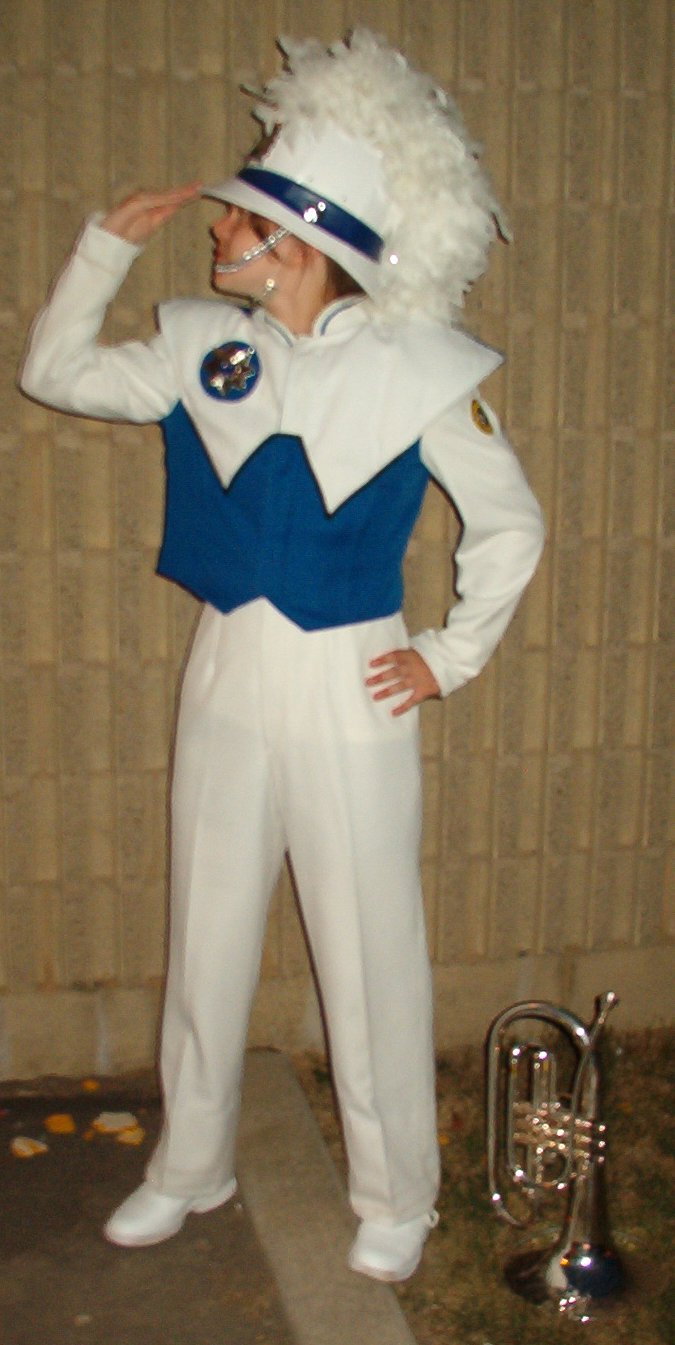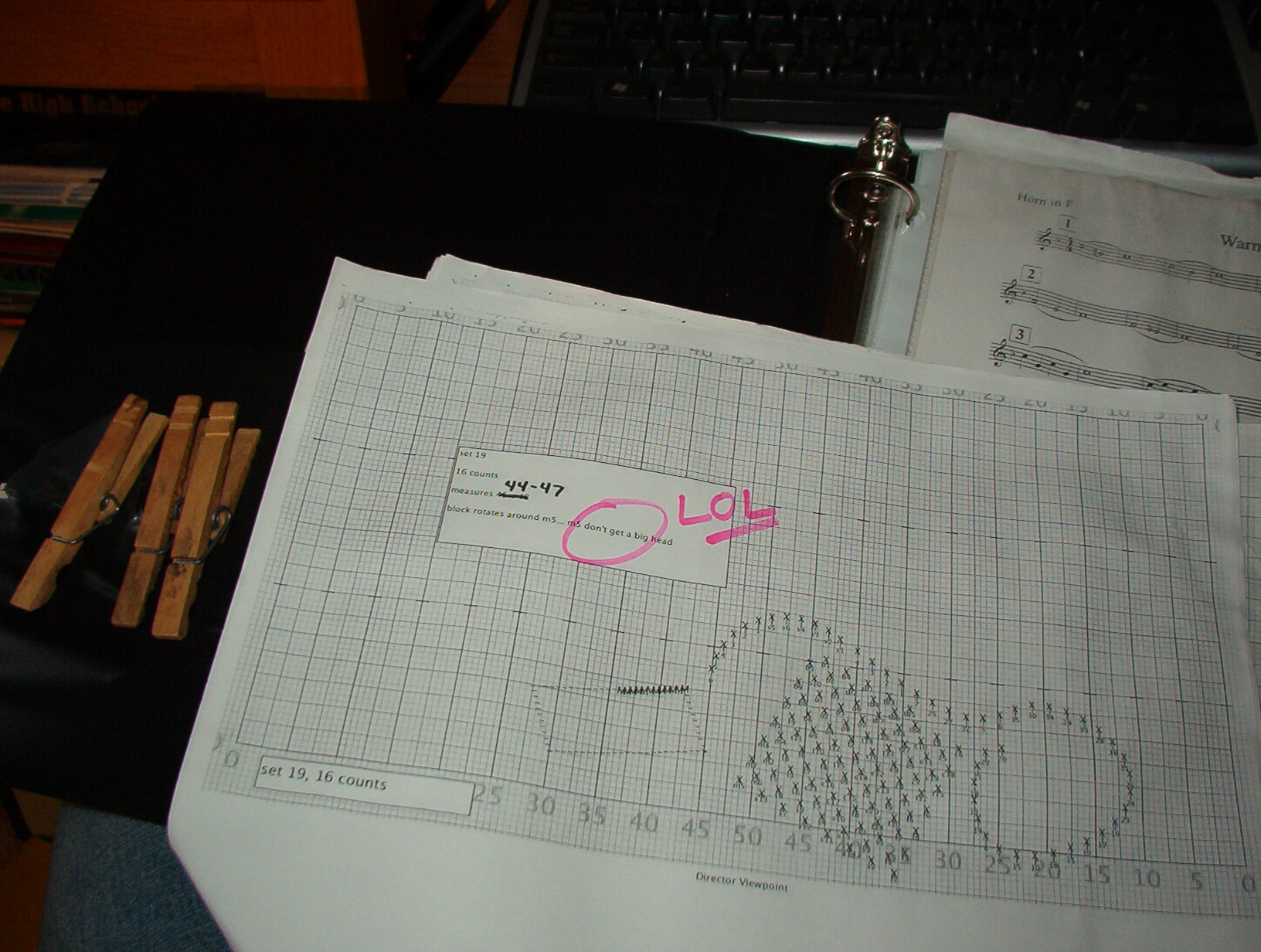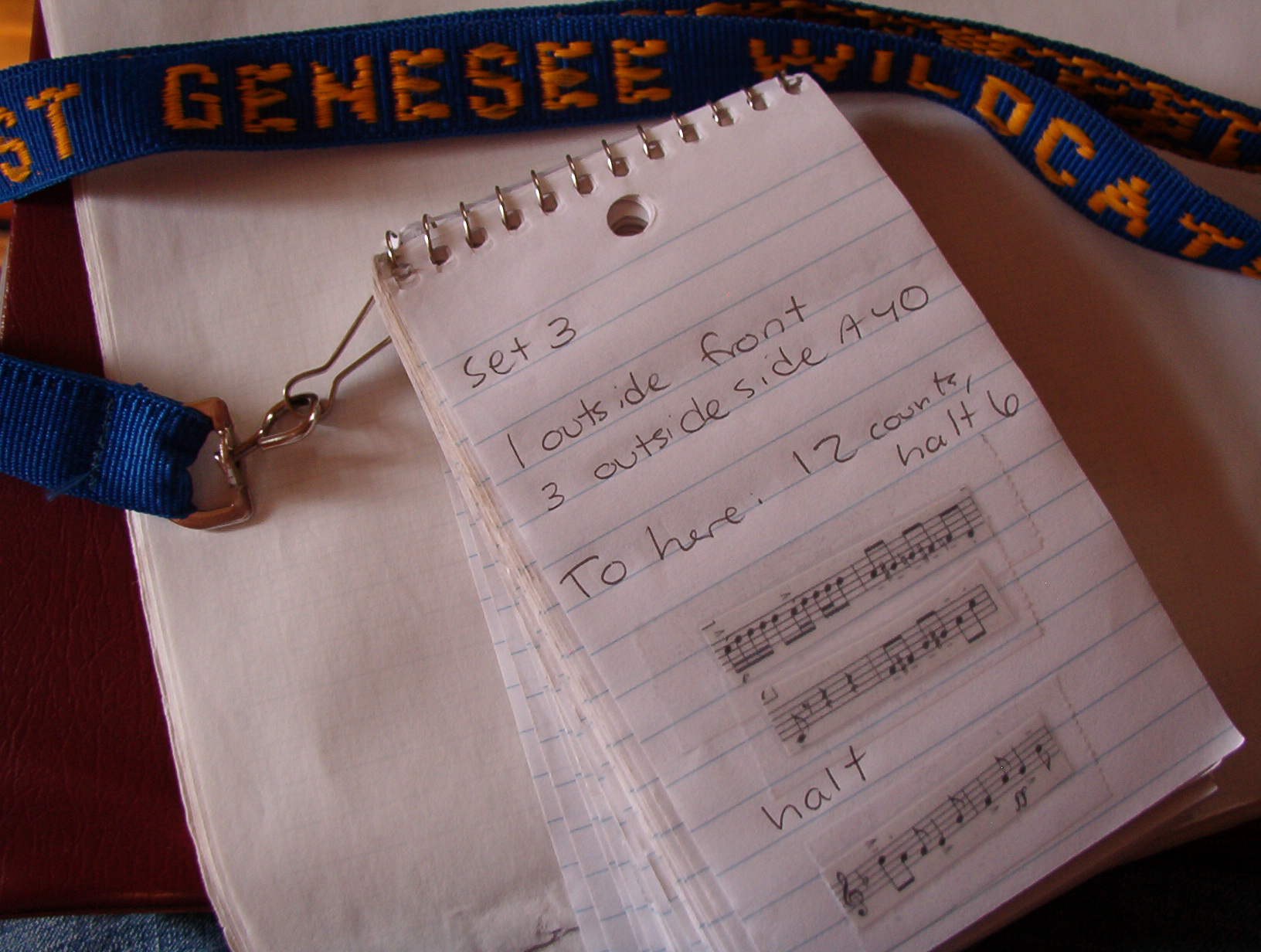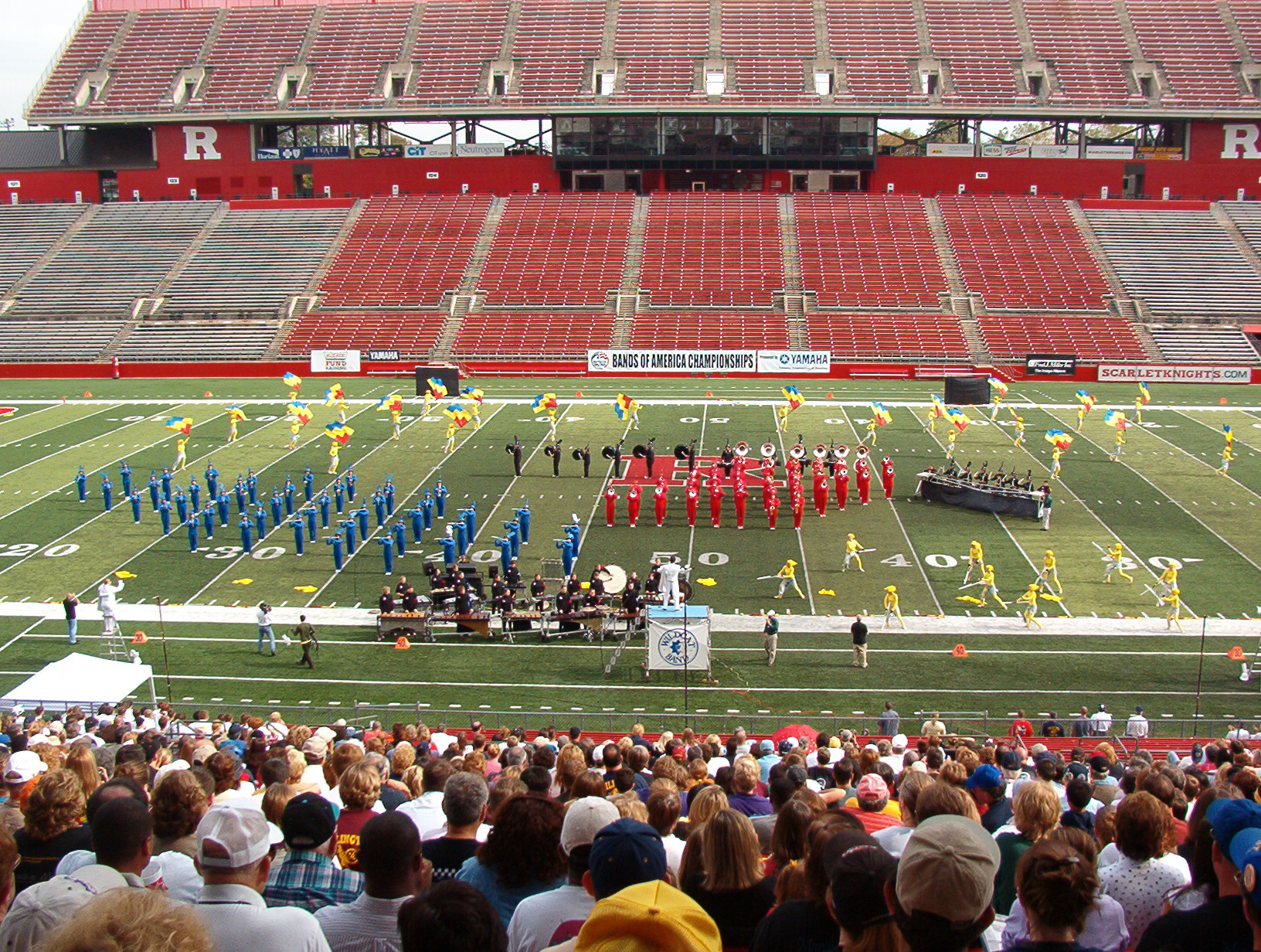This feed contains pages in the "culture" category.
While I'm not a Harvard student, I'm vaguely affiliated through some friends of mine with Harvard Free Culture, a local Free Culture chapter. They are, after all, just up the street. One of our newest projects is the Free Music Project. The goal, is, well, to gather together music under free licenses, both for just making a centralized collection of free music and for other specialized purposes, like providing music to go on OLPC laptops and school servers.
So, go find free music, or if you're an artist, re-release your music under a free license or record some new stuff. (If you're in the Boston area, Antenna Alliance can help you get your music recorded for free. Who knows, maybe your music will end up on millions of laptops.
It's true: you never know when you may end up bringing home a teapot. Like, for instance, when attending an international graphics conference.

The reason for this apparently had to do with the large exhibit of teapot-based digital art in the International Center section of the conference, inspired by this guy whose name I don't remember who was drinking tea with his wife one afternoon and looking for a cool object with lots of curves to render. And she told him to use the teapot. There's nothing quite like Boston Skyline rendered in teapots. Served with a slideshow presentation of the history of the most popular beverage in the world (including, of course, many references to the Boston tea party), SCONES, tea, SCONES, and free teapots from Upton Tea Imports--at least for four minutes or so until the buzzing hordes got through with snatching them up.
I'm really quite pleased, since I, being a poor college student and only recently having started collecting my own kitchenwares, didn't own a teapot before and am now able to conduct devious experiments with loose tea instead of relying on teabags all the time. The pot's not big but it'll do fine for one person!
DIY Canadian farm-style, or "what I did this weekend."
First, you pack about ten people into the back of a pickup truck...
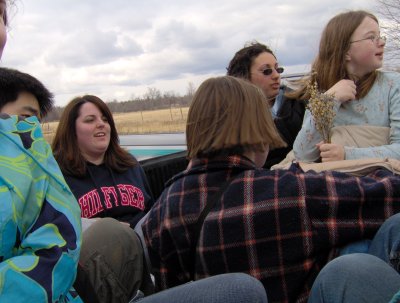
...and walk through the fields...
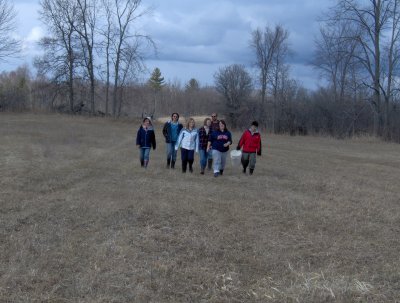
...to empty the buckets on the trees, spiles having been drilled previously.
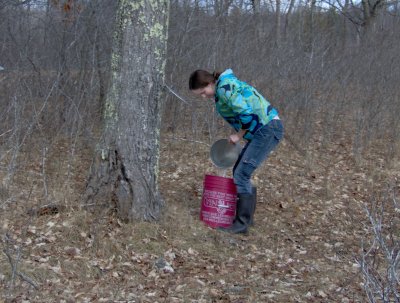
Back home, you cook in the ancient, homemade sap cooker (which was once an oil drum, long ago).

Sometimes, you need to feed the fire. Make sure to keep adding sap when the level gets low, or when the pans threaten to boil over (overzealous fire feeders!).
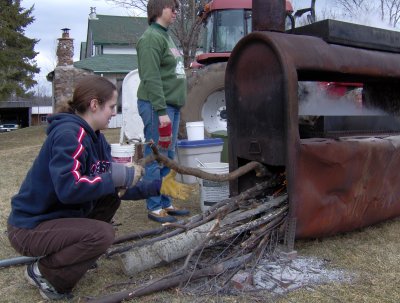
If you're bored, you could always go exploring and fall through the ice on the half-frozen flooded field.
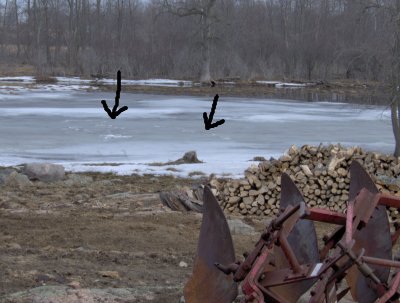
Late afternoon is the best time to take advantage of the fact that boiling liquid kills bacteria, by sampling straight from the pans--with the same spoon. By now the sap's thick enough to actually taste good.

The day's cooking is done when the sap's about 60% sugar. (Damn, I don't have a picture of the sugar-measuring gizmo.) The sap pans are unloaded...
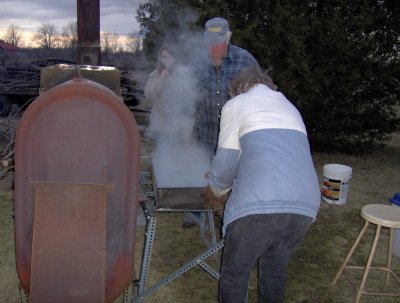
...into pots, to be brought inside and finished on the stove to 66% sugar. A more controlled environment, to prevent accidental burning/overcooking/sludgification. Which would be a Bad Thing.
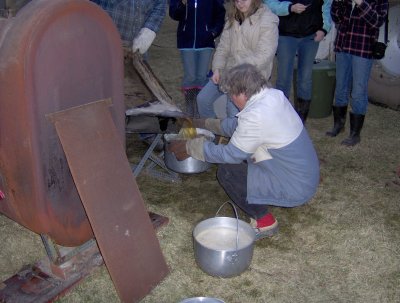
A fun weekend. It's something I do just about every year (the farm belongs to my grandparents), but this year I managed to drag a couple friends along to slave have fun.
From what I've seen there are a few people out there that enjoy these random bits of culture, so here's a run-up on the life of a North American high school "bandie" (this is a slang term that is often regarded as derogatory among those who don't consider themselves one.)
Some of this is specific to my experience, of course, but a good deal of it applies to other field bands as well, especially from around this area.
A field band marches on a field. A football field (American football). Like this:
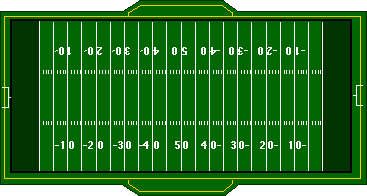
A field consists of several parts. First of all, the field is divided into two halves, separated at the 50 yard line: side A and side B. It's then further divided into thirds lengthwise, at the two "hashes" -- front and back.
In band, everyone knows what a "step" is. It's not your average step. In fact, it's only 22.5 inches long, whereas an ordinary step would run about 30 inches on average (give or take a few depending on the person). When marching down the field in a normal manner, there are 8 steps for every 5 yards. Herein lies the source of a normal step being 22.5 inches long (do the math). On a high school field, there are 28 steps between the front sideline and the front has, the front hash and the back hash, and the back hash and the back sideline. (On a university field, they have "college hash marks" which are about 3.5 steps closer to the center of the field than high school hashes.)
Here's a badly gimped version of the previous image, to illustrate the above:
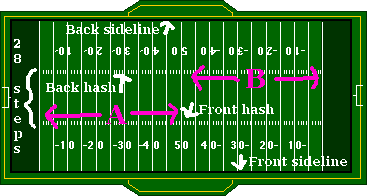
(Note: you'll get your variations on this; we've changed the names of various things several times just in the past 6 years or so. E.g. "side A" used to be "Side 1", etc.)
Of course, there's no field band that always marches at 8 steps to every 5 yards. That would be incredibly boring. When there are 8 steps to every 5 yards, we call that step size an "8 to 5" step. When there are 6 steps to every 5 yards, it's a "6 to 5" step. I'm sure it's obvious how the rest of the naming goes.
Right, now: marching. Not every band marches with the knees high on every step, pep-band style like you see in the movies such as Drumline. Syracuse University does this, but New York high schools don't. We march straight-leg style, where the point is to not have an excess of leg motion. I don't really know how to better illustrate without video.
Marching forward, it's important to roll your feet - toe to heel - and use all those leg muscles to keep yourself tall and moving smoothly, which makes it much easier to play. Marching backward, you stay completely on the balls of your feet, never touching heels to the ground. On astroturf (fake grass), if you put your heels down while marching backward, your foot is going to catch on the ground, and then you're going down.
Horns are held up at an 11-degree angle (from horizontal). Yes, 11. The mellophones in my band have the lead pipes on our horns professionally bent slightly upward, which is a great way to cheat this and make it easier. At one point the baritones were supposedly also going to get this, though I'm not sure what happened with that.
Uniform: pants, jacket, helmet, gloves. Here's me sans the gloves, which haven't come in yet from order:
Just marching is great, but how do you know where to go? This is where drill comes in. Drill is the marching part of band. Drill consists of a series of "dots"; each dot is a position on the field where you need to be at a certain time. A drill page looks like this:
(If you zoom in, I am in fact m5.)
Dragging around those hefty sets of drill while rehearsing would be pure insanity, though, so we make what's called a "dot book" - looks like this:
The numbers about inside/outside are steps. We don't really have any rules about how to make dot books; the main thing is just to make sure that all the information that will be useful to you is on the page.
Other bits: most of the time one marches shoulders flat to the front of the field, and in straight-line paths from dot to dot. There are exceptions. Also, drill instructors give terse instructions for putting horns up, down, etc. using 5-beat commands. "Dressing a line" is to make sure that you're in line with the person next to you in a block; "covering down" is making sure you're behind the person in front of you in a block.
I don't have any good overheads for this year yet, but here's last year:
I know that I have left things out, but it's not supposed to be comprehensive - and it's long enough already. Enjoy!
I finally went to see it with a friend of mine on Saturday (gotta get that matinee showing and save two bucks). Despite the rantings from a lot of people, I liked it, though I'm not as picky as some when it comes to movies. It was definitely an improvement from Episodes I and II. Yes, the scenes with Anakin and Padme were cheesy. That's okay, though. They did a pretty good job of tying things together to meet up with Episode IV, and I completely loved the last scenes where the infant Luke and Leia were adopted in their respective places.
One weird thing that struck me was that R2D2 seemed to be even more lifelike than ever for a robot...
